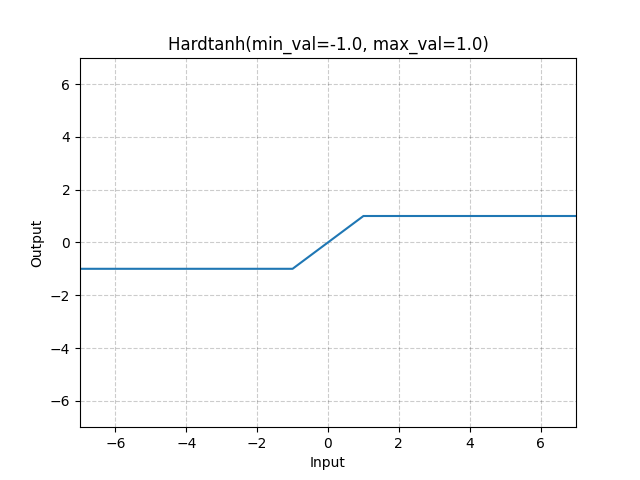Hardtanh — PyTorch 2.7 documentation (original) (raw)
class torch.nn.Hardtanh(min_val=-1.0, max_val=1.0, inplace=False, min_value=None, max_value=None)[source][source]¶
Applies the HardTanh function element-wise.
HardTanh is defined as:
HardTanh(x)={max_val if x> max_val min_val if x< min_val x otherwise \text{HardTanh}(x) = \begin{cases} \text{max\_val} & \text{ if } x > \text{ max\_val } \\ \text{min\_val} & \text{ if } x < \text{ min\_val } \\ x & \text{ otherwise } \\ \end{cases}
Parameters
- min_val (float) – minimum value of the linear region range. Default: -1
- max_val (float) – maximum value of the linear region range. Default: 1
- inplace (bool) – can optionally do the operation in-place. Default:
False
Keyword arguments min_value and max_valuehave been deprecated in favor of min_val and max_val.
Shape:
- Input: (∗)(*), where ∗* means any number of dimensions.
- Output: (∗)(*), same shape as the input.

Examples:
m = nn.Hardtanh(-2, 2) input = torch.randn(2) output = m(input)